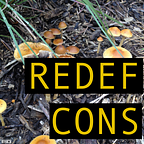Lands Unseen
Climate change is unraveling the conservationist’s catch-22.
The lands that people do not see are often the lands that people do not value. Yet, the lands that are visible often become commodified and stereotyped, reducing their value to their popularity. In other words, drawing attention to the places worth protecting devalues important aspects of the land. But, in order to value the land, it needs to be present in the public’s minds and imaginations. How can conservationists make lands visible without turning them into superficial icons?
Don Delillo’s “Most Photographed Barn in America” (from his classic book White Noise) is a tourist attraction for being a tourist attraction. The site is an average barn, but his characters still go out of their way to visit it and take pictures. Over time, no one is photographing the barn; rather, they are photographing the idea of the most photographed barn. This barn is fictional, but its counterparts exist throughout the conservation world. Idyllic beaches are worth preserving because they take on the idea of paradise. Popularity amplifies the Grand Canyon’s awe-inspiring depths — after decades of being the quintessential road trip destination, it has come to signify more than itself. The Desert of Maine is an equally fascinating place, but it lacks the pervasive legendry, and so it remains a quirk of the natural world.
Of course, land is more than a signifier. Our resources and natural systems allow us to thrive on the earth. We are directly and indirectly dependent on the land for our survival and economic prosperity. Even though we do not see the nitrogen cycle, we must remember that it is present alongside our constructed meanings of the land. We cannot let the notion of “paradise” eliminate the value of functionality — even though calling the land “paradise” will draw support for the conservation of that land.
This balance has been difficult to strike. These days, it’s a little easier. Land is one of the most promising solutions to climate change because of its ability to sequester carbon, provide food, and support biodiversity. As more people become aware of natural infrastructure, we are collectively revising our concept of land. We are valuing even the lands we cannot see, and we are unseeing iconic lands so that we can reimagine them as solutions.
In an era of climate change, all lands are paradise.
******************************************************************Originally published at redefineconservation.com. Thank you for reading!
